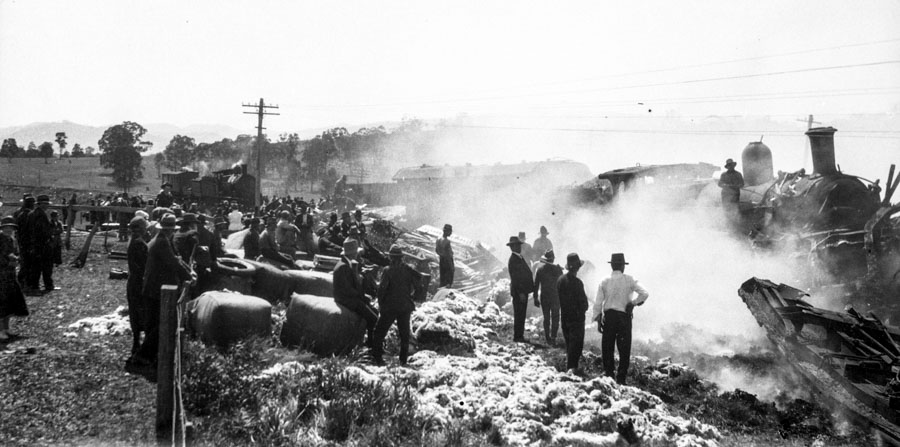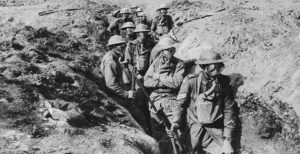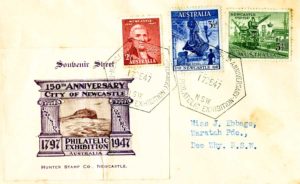Murrurundi: Good Friday 1908
It was Good Friday, April 17, 1908. At about 3.35am the Glen Innes train was just about to leave Murrurundi station, in the Upper Hunter Valley, when it was hit head-on by the Brisbane Mail train, travelling south.
Ultimately, signalling staff at the small country station were held responsible for accidentally misleading the drivers of the trains into believing the tracks were clear.
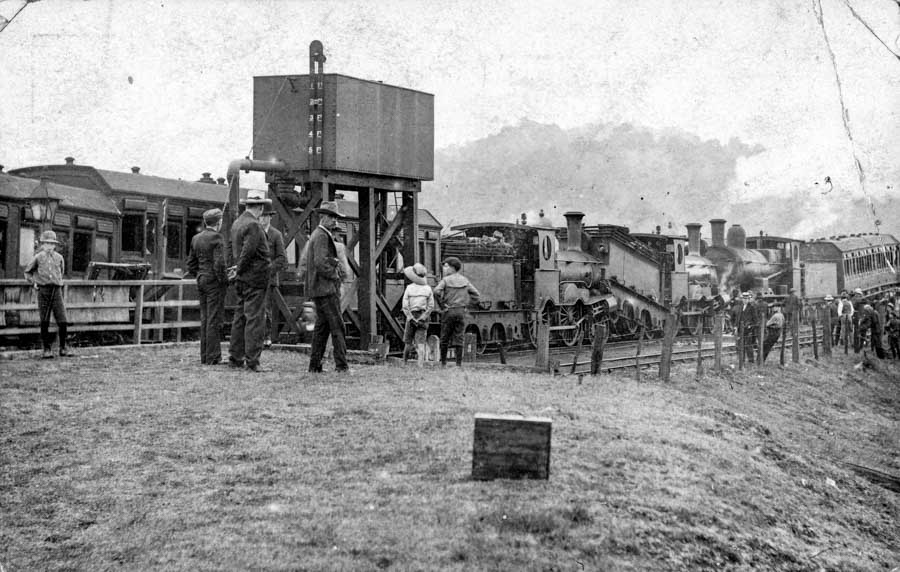
The impact of the smash was tremendous, and it was incredible that nobody was killed. Injuries amounted to about 20, a few of them very serious. The driver of the Brisbane train – drawn by one engine – said at the time that he saw the other train, but wasn’t able to pull up in time. The Glen Innes train was drawn by two engines. The engines were badly damaged, and carriages telescoped into each other well back along the trains.

Luckily, the Glen Innes train had few passengers aboard, and none at all were on its worst-damaged carriage. The train’s fireman, E. Bult, of the Newcastle suburb of Hamilton, said he did not see the other train coming at all. The smash threw him onto the coal tender, causing him serious injuries and leaving him unconscious for a time. The train’s driver, R. Embleton of the Newcastle suburb of Islington, managed to jump off the engine in time to avoid injury.
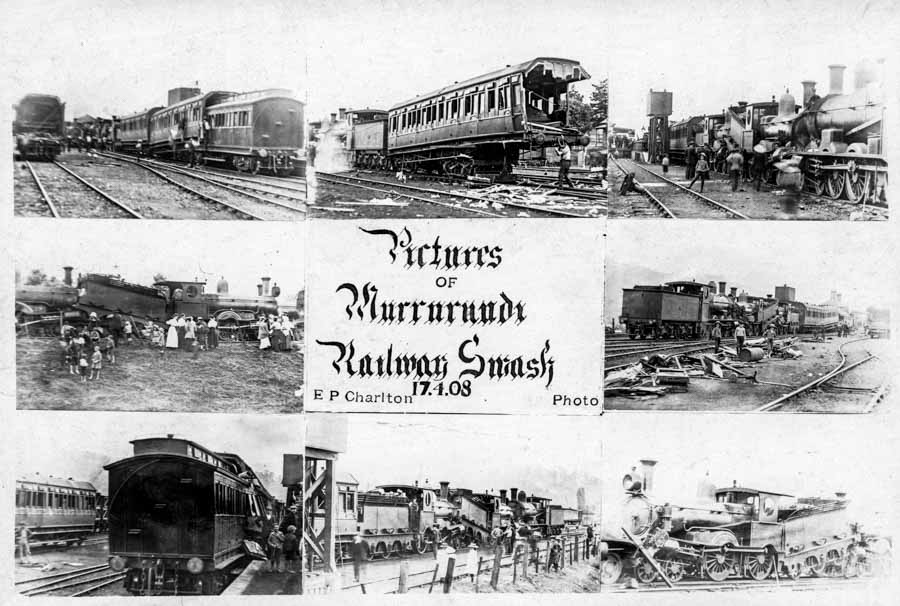
The Brisbane train was well-packed with passengers. Many were soldiers from Armidale and Tamworth, heading for the annual Easter encampment at Liverpool. There was also a party of cricketers from Manilla on their way to Scone. Doctors from surrounding districts were rushed to the scene, since the wreckage strewn all over the site of the collision seemed to presage a terrrible casualty list. One of the senior military leaders on board at the time was Major Braund (who was destined to be killed at Gallipoli in 1915). He described being awoken by a “curious bumping”, then feeling the collision, followed by the sound of splintering wood and breaking glass.
The wall of the carriage in which he was travelling was bent over and the lights went out. As the soldiers clambered out of the windows they heard the sounds of people groaning all around them and quickly pitched in to help with rescue efforts.
Murulla: September 13, 1926.
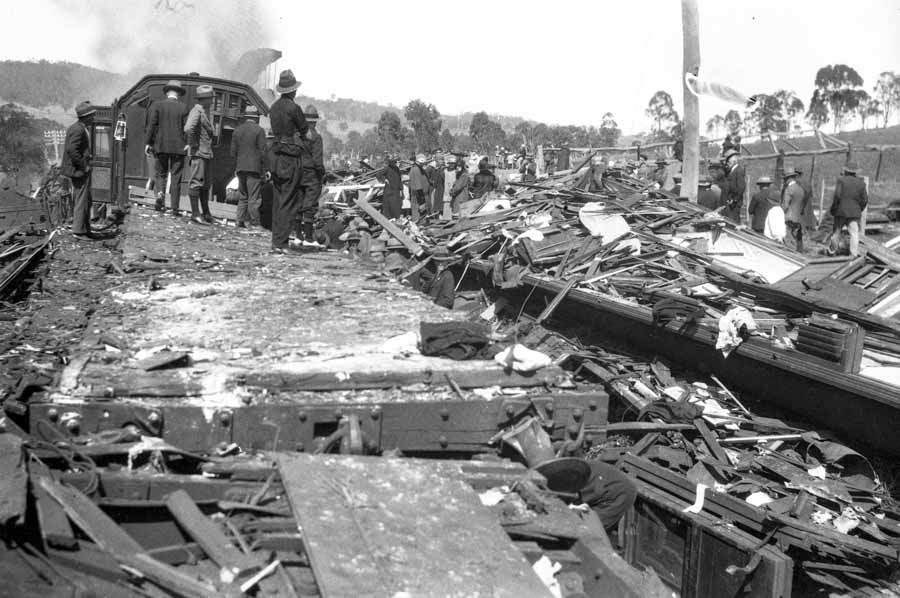
The stretch of rail near Murulla, NSW, was already regarded as jinxed, and some had dubbed it “the valley of death”, following previous fatal accidents. On September 13, 1926, the area lived up to the name when 27 people were killed in a horrific smash.
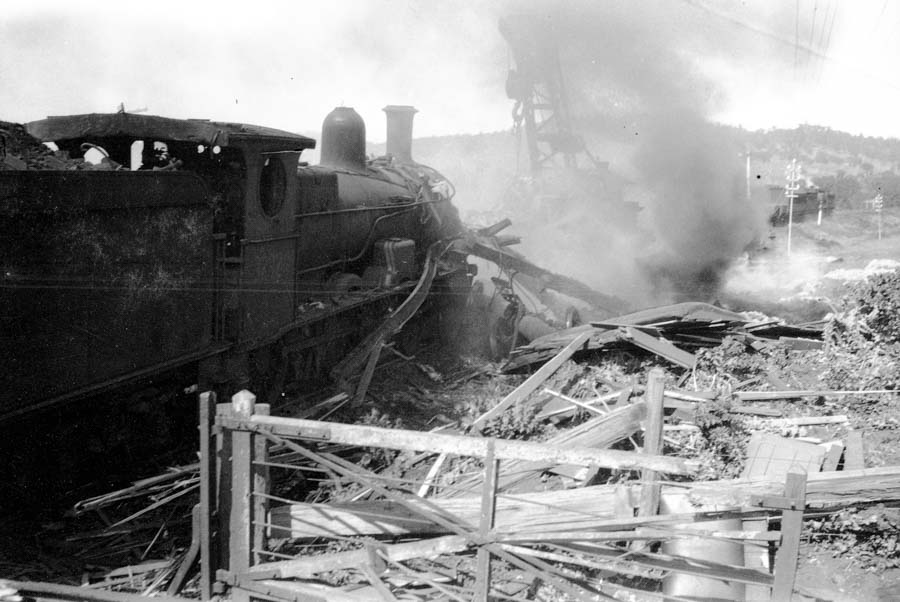
It was just before midnight when the Moree Mail train collided with some runaway freight cars near the Murulla siding, close to Blandford. Somehow, a coupling failed on a freight train hauling wagons loaded with wool up Warlands Range, and several of the wagons rolled back down the slope, picking up speed as they went. At the same time, the Moree Mail was picking up speed ready to tackle the steep grade, so the force of the collision was extreme.
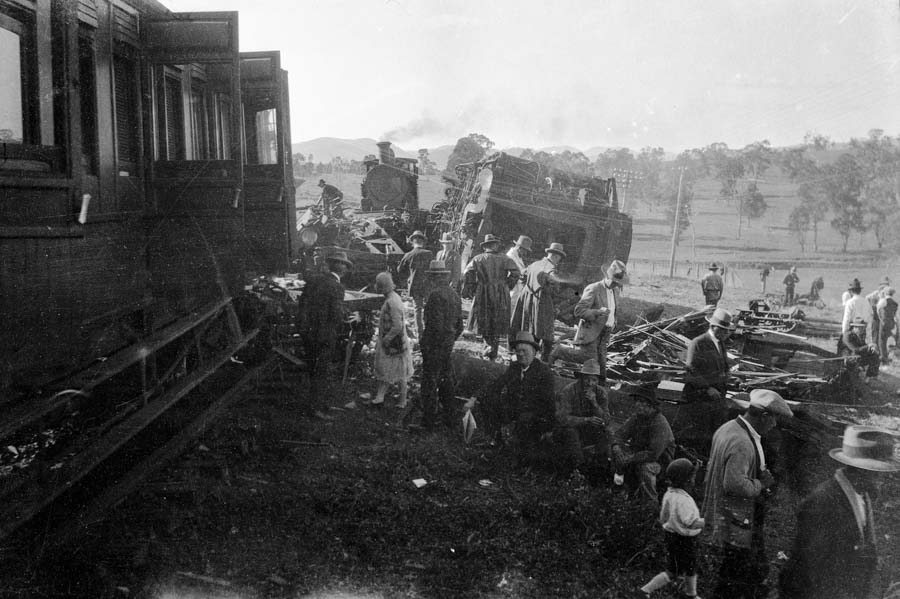
The engine of the mail train was badly damaged, and the fireman and driver were both buried in the coal box, from which they were dug, injured but alive. It was the second passenger car that suffered the most. Most of the fatalities occurred in that carriage, as it telescoped under the impact.
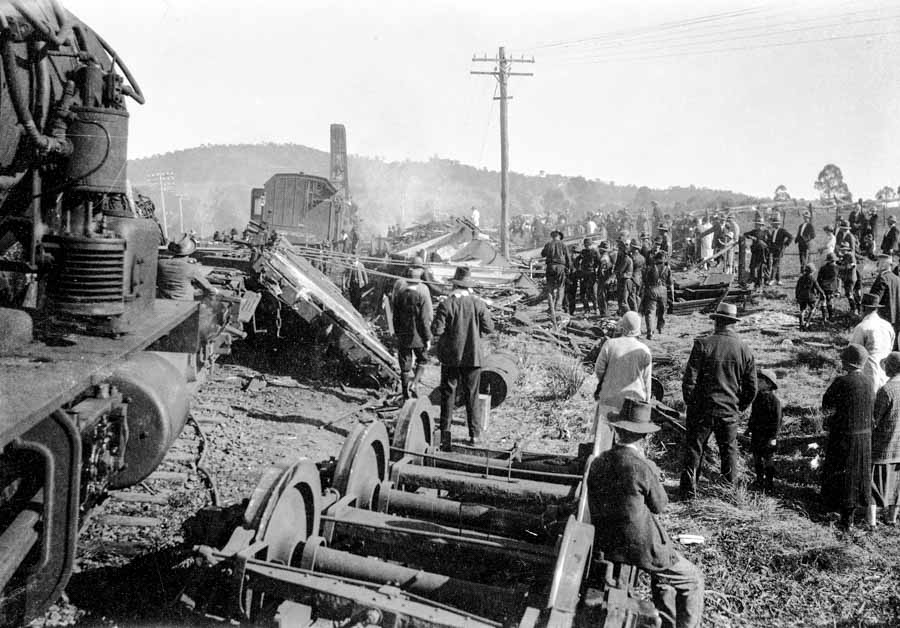
Area commissioner J.D. Reid was travelling in a sleeper car with his wife when the accident happened. He gave the following account to The Scone Advocate:
The first intimation I received of the disaster was the jolting of the car, which simultaneously lurched at an angle of about 25 degrees. We alighted and heard passengers calling for help. Rescue operations were started forthwith by the uninjured passengers. The leading A.J. carriage coupled to the engine was not damaged. One man was actually sleeping in this carriage and when awakened took some convincing that he was at the seat of an awful catastrophe. That the occurrence might easily have been worse, serious as it is, one only had to glance at the truck-load of wool which toppled over the engine and took fire. We shifted most of this wool as far away as the fence, and therefore made an effective break, otherwise the whole of the train would in all probability have taken fire. It was an agonising, terrible work extricating the injured and dead.
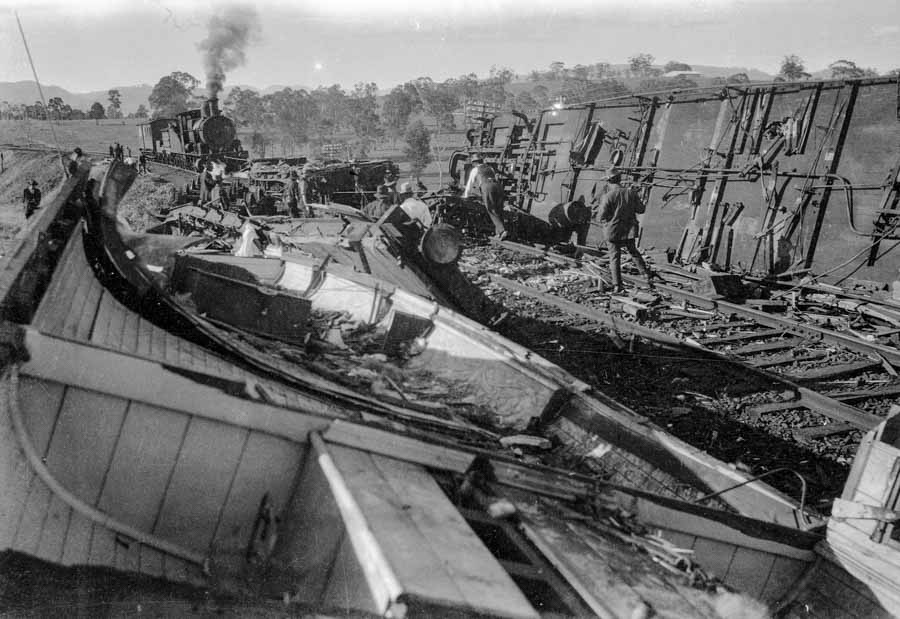
Many of the injuries were extreme, and many of the injured were so badly trapped that it took great efforts to extract them. One woman who was freed alive had one of her children dead on her lap and another – also dead – beside her. Many people were killed in their sleep.
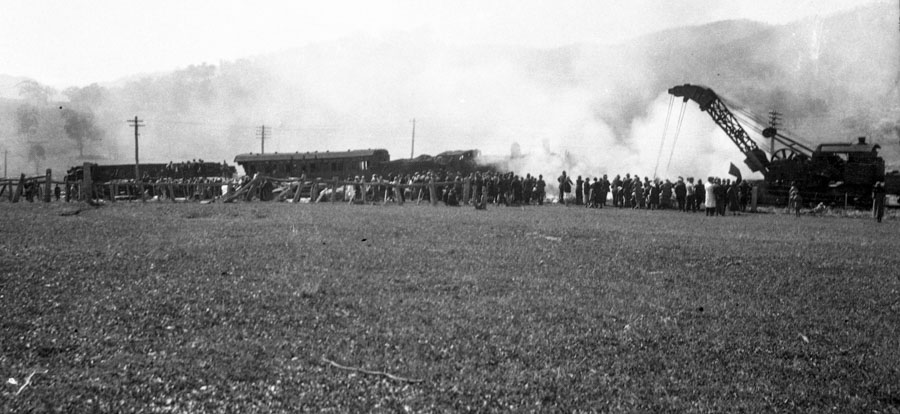
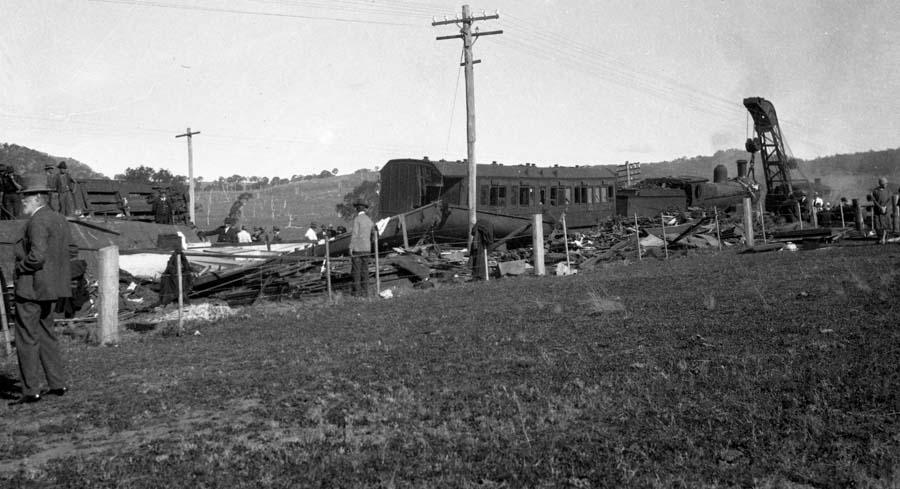
Survivor W. Findlay of Gunnedah described his escape:
My seat seemed to be giving way and then the carriage, or rather the walls, seemed to be caving in. Just after the seat canted I found myself on the grass, having been thrown out. For a moment or two – it seemed like minutes to me – no other person was to be seen. The screaming and moaning to be heard was terrible and was seemingly worse because of the darkness. Presently others were on the scene and matches were being struck from one end of the train to the other. A great fire was noticed in front of us shortly afterwards, and we then saw for ourselves that it was wool that had taken fire.
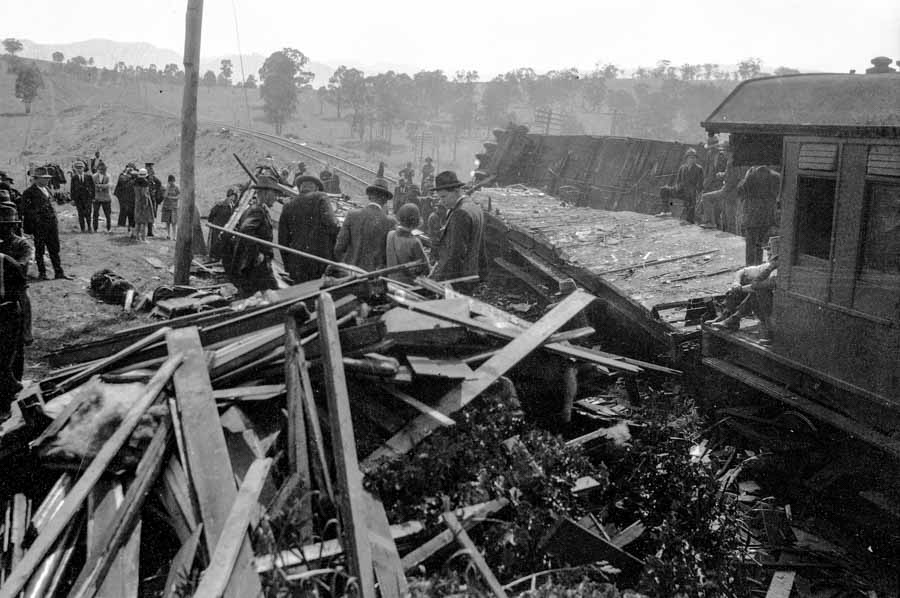
An inquest into the accident heard that the goods train had experienced problems early in the night, with the ill-fated wagons separating while the train was at Murulla. Apparently, they were re-hitched with a wire rope – even though this meant the air-brakes could not be engaged. While the train was being moved forward to let the Moree Mail pass through, the rope broke and the wagons hurtled down the slope. The coroner committed the goods train’s driver and guard for trial for criminal negligence.
They faced trial and were acquitted.

